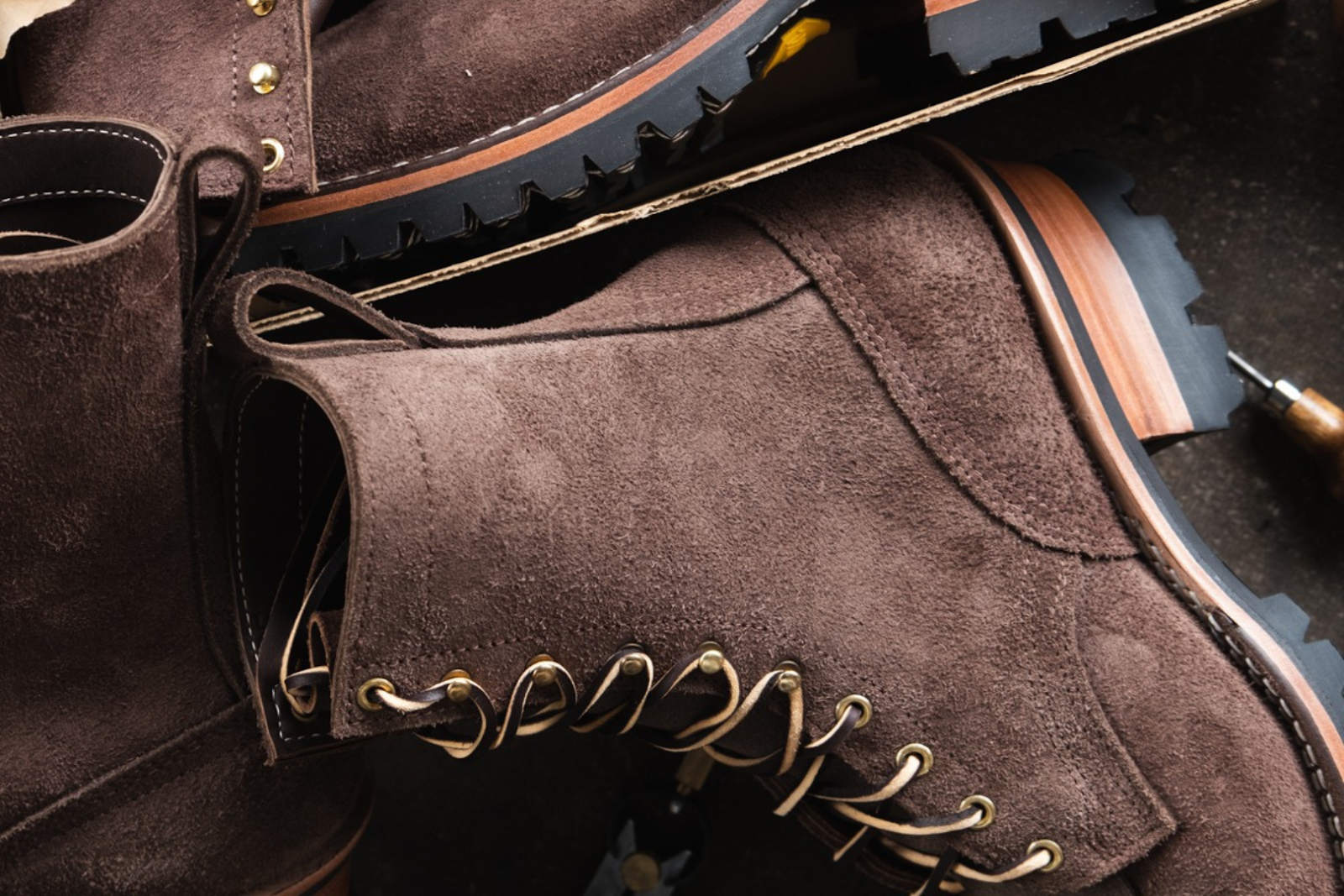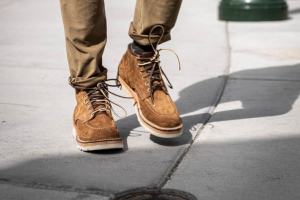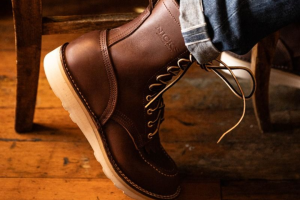Snow Boots: Quality Footwear For Winter Adventures

Whether you're braving a snow-covered city street or trekking through untouched powder, the right pair of snow boots can make all the difference. Designed to keep your feet warm, dry, and comfortable in harsh winter conditions, snow boots are a must-have for buyers seeking quality boots that last. In this article, we will explore what snow boots are, why they are important, how they work, their benefits, potential downsides, and alternative options.
Embrace the winter season with confidence and unparalleled style with Nick's Handmade Boots. Each pair is a testament to our commitment to quality and durability. Explore our collection at Nicks Handmade Boots and find the perfect companion for your winter journeys.
What Are Snow Boots?
Snow boots, also known as winter boots, are specialized footwear designed to provide insulation and protection in cold and snowy conditions.1 They are typically constructed with a combination of materials such as leather, nylon, rubber, and mesh, which enhance their durability and performance. These boots feature an insulated lining, and waterproof outer layer, and often have an aggressive tread pattern to provide traction on slippery surfaces.


Experience Excellence With Nicks Boots!Discover the craftsmanship that defines generations. Our fine leather goods, including our iconic boots, are crafted to stand the test of time.
Experience the difference with Nicks Boots today! |
What Materials Are Snow Boots Typically Made From?
Snow boots are meticulously crafted using a range of high-quality materials to provide durability, insulation, and weather resistance. The most commonly used materials for snow boots include:
- Leather: Full-grain leather is a popular choice for snow boots due to its durability, water resistance, and ability to age gracefully over time. If you're looking for boots that exemplify the best use of full-grain leather, Nick's Boots is a testament to this, crafting all their boots exclusively with premium full-grain leather to ensure top-notch quality and durability.
- Nylon: Nylon is often used in the construction of snow boots due to its lightweight nature, flexibility, and resistance to water and abrasion.
- Rubber: The outer soles of snow boots are frequently made from rubber, which provides excellent traction on slippery surfaces and ensures waterproofing.
- Insulation: Various insulation materials, such as Thinsulate™ or synthetic fibers like PrimaLoft®, are used in the lining of snow boots to provide warmth and comfort in freezing temperatures.
What Are The Different Styles Of Snow Boots Available?
Snow boots come in a variety of styles to cater to different preferences and activities. Some common styles include:
Traditional Snow Boots
These boots typically feature a high shaft, insulation, and a sturdy outsole for maximum protection and warmth in deep snow.2
Winter Hiking Boots
Designed for outdoor enthusiasts, winter hiking boots offer a balance between functionality and style, providing insulation, waterproofing, and improved traction for winter hikes and other outdoor activities.
Tall Snow Boots
With a taller shaft, tall snow boots offer added protection against snow accumulation and colder temperatures.
Mid-Calf Snow Boots
These boots provide a versatile option, offering both protection and flexibility for various winter activities.
Snow Sneaker Boots
Combining the comfort and style of sneakers with the functionality of snow boots, snow sneaker boots are lightweight, waterproof, and suitable for milder winter conditions.
What Are The Benefits Of Snow Boots?
Investing in a quality pair of snow boots offers numerous advantages, including:
- Warmth: Snow boots feature insulation that keeps your feet cozy and comfortable, even in freezing temperatures.3
- Waterproofing: The waterproof outer layer ensures your feet stay dry, even when trudging through puddles or deep snow.
- Traction: Thanks to their specialized outsoles, snow boots provide excellent grip on slippery surfaces, reducing the risk of falls and injuries.
- Durability: Snow boots are designed to withstand the harsh conditions of winter, making them a long-lasting investment.
- Versatility: Snow boots are not only suitable for snowy conditions but can also be used for other cold-weather activities like hiking and camping.


How To Properly Care For And Maintain Snow Boots?
Proper care and maintenance are essential for extending the lifespan and performance of your snow boots. Here are some tips to help you keep your boots in top shape:
- Cleaning: Remove dirt and debris from your boots after each use. Use a soft brush or cloth to wipe away any dirt, and if necessary, use a mild detergent to clean the exterior. Allow them to air dry before storage.
- Waterproofing: Regularly apply a waterproofing spray or wax to maintain the boots' water resistance. This will help prevent moisture from seeping through and keep your feet dry.
- Drying: After wearing your snow boots in wet conditions, make sure to dry them thoroughly. Avoid placing them near direct heat sources, as high heat can damage the materials. Instead, stuff them with newspaper or use a boot dryer to speed up the drying process.
- Storage: Store your snow boots in a cool, dry place away from direct sunlight. Avoid folding or crushing them, and consider using boot shapers or stuffing them with newspaper to maintain their shape.
- Maintenance: Regularly inspect your snow boots for any signs of wear and tear. Replace worn-out laces, repair loose stitching, and address any minor damages promptly to avoid further deterioration.
To achieve a thorough cleaning solution, consider Nicks Ultimate Boot Care Kit, which includes all the essential tools to keep your boots looking immaculate, regardless of how frequently they require maintenance.
How To Choose The Right Snow Boots For Your Winter Adventures?
When selecting snow boots, it's important to consider your specific needs and the activities you'll be engaging in. Here are some factors to keep in mind:
- Insulation Level: Choose the right level of insulation based on the temperatures you expect to encounter. Thicker insulation is suitable for extremely cold climates, while lighter insulation works well for milder winters.
- Waterproofing: Look for boots with a waterproof outer layer or treated materials that can withstand wet and snowy conditions.
- Traction: Opt for boots with a robust outsole and deep lugs to ensure excellent traction on slippery surfaces.
- Fit and Comfort: Proper fit is essential for comfort and warmth. Consider trying on different sizes and styles, and ensure there is enough room to wear thick socks.
- Activity-Specific Features: Different winter activities may require specific features. If you plan on hiking, look for boots with ankle support and enhanced flexibility. If you'll be working outdoors, prioritize durability and additional toe protection.
What Are The Alternatives To Snow Boots?
If snow boots don't align with your preferences or needs, several alternatives can provide varying levels of protection and warmth in wintry conditions:
Wellington Boots
Often made of rubber, Wellington boots are waterproof and suitable for wet and muddy conditions. They lack the insulation of snow boots but can accommodate removable liners for added warmth.
Winter Sneakers
These lightweight and versatile footwear options feature insulation and waterproofing, offering a blend of style and function for milder winter conditions.
Heavy Duty Work Boots
Designed for rugged outdoor work, heavy-duty work boots often incorporate insulation and waterproofing features, making them suitable for winter activities that require more durability and protection.
Final Thoughts On Snow Boots
Snow boots are not just a necessity for winter adventures but a testament to the craftsmanship and ingenuity of the crafted boots and leather goods industry. With their insulation, waterproofing, and traction, snow boots offer unparalleled comfort, protection, and durability in harsh winter conditions. Whether you're navigating snowy city streets or exploring untouched powder, investing in a quality pair of snow boots is essential for ensuring a safe and enjoyable winter experience.
At Nicks Boots, we understand the importance of quality footwear that not only meets your functional needs but also reflects your personal style. Our dedication to masterful craftsmanship and the use of premium materials is evident in our fine leather goods, including our renowned boots. Visit our website to explore our range of durable and stylish boots that are designed to be worn for years to come. Join us in celebrating the artistry and tradition of crafted boots and leather goods, and embark on your winter adventures with confidence and style.
Frequently Asked Questions About Snow Boots
Can snow boots be worn in wet conditions?
Yes, snow boots are designed to withstand wet conditions. They are typically made with waterproof materials and feature sealed seams to prevent water from entering the boots. However, keep in mind that the waterproofing may degrade over time, so it's important to properly maintain and reapply waterproofing treatments as needed.
What's the best way to break in new snow boots for optimal comfort?
To break in new snow boots, wear them for short periods at first, gradually increasing the time as they conform to your feet. Adding extra cushioning insoles can also help.
Can I wear snow boots for activities other than winter sports?
Absolutely! Snow boots are versatile and can be worn for various winter activities beyond sports. They can be suitable for hiking, walking, running errands, or simply enjoying the outdoors in cold and snowy conditions. Many snow boots are designed to be stylish as well, so they can complement your everyday winter outfits.
How long do snow boots typically last?
The lifespan of snow boots depends on factors such as usage, care, and the quality of the boots. With proper care, a high-quality pair of snow boots can last for several winters. Regularly cleaning and waterproofing your boots, as well as addressing any minor damages promptly will help extend their longevity.
Can I machine-wash my snow boots?
It is generally not recommended to machine-wash snow boots. Excessive exposure to water and agitation in the washing machine can damage the materials and compromise the boots' waterproofing. Instead, follow the manufacturer's instructions for cleaning and care. Hand-washing with a mild detergent and gentle scrubbing is usually the preferred method.
Can I use snow boots for skiing or snowboarding?
Snow boots are not designed for skiing or snowboarding. These activities require specialized ski or snowboard boots that provide the necessary support and rigid structure for proper performance and safety on the slopes. Using snow boots for skiing or snowboarding can result in a lack of control and an increased risk of injury.
What's the difference between synthetic and natural insulation in snow boots?
Synthetic insulation is often more affordable and dries faster, while natural insulation like wool offers superior warmth and moisture-wicking properties, keeping your feet comfortable and dry.
Do snow boots come in different widths for a better fit?
Some snow boot brands offer variations in width to provide a better fit for different foot shapes and sizes. Exploring different options may help you find the perfect fit. If you're considering a pair from Nick's Boots, be sure to check out their sizing guide to find the perfect fit tailored to your feet.
Can I wear snow boots indoors?
While snow boots are designed for outdoor use in snowy and cold conditions, you can wear them indoors if needed. However, keep in mind that snow boots may be bulkier and heavier than regular footwear, which could be less convenient and comfortable for extended indoor wear.
Can I wear thin socks with snow boots?
While wearing thin socks with snow boots is possible, it's generally recommended to opt for thicker, moisture-wicking socks to provide insulation and prevent sweating. Thick socks also help in achieving a proper fit and cushioning. Avoid cotton socks as they tend to retain moisture, increasing the risk of discomfort and cold feet.
Sources:
- KUKLANE, K. (2009). Protection of Feet in Cold Exposure. Industrial Health, 47(3), 242–253. https://doi.org/10.2486/indhealth.47.242
- Colonna, M., Nicotra, M., & Moncalero, M. (2013). Materials, Designs and Standards Used in Ski-Boots for Alpine Skiing. Sports, 1(4), 78–113. https://doi.org/10.3390/sports1040078
- Kalev Kuklane, Geng, Q., & Ingvar Holmér. (1998). Effect of Footwear Insulation on Thermal Responses in the Cold. International Journal of Occupational Safety and Ergonomics, 4(2), 137–152. https://doi.org/10.1080/10803548.1998.11076386




